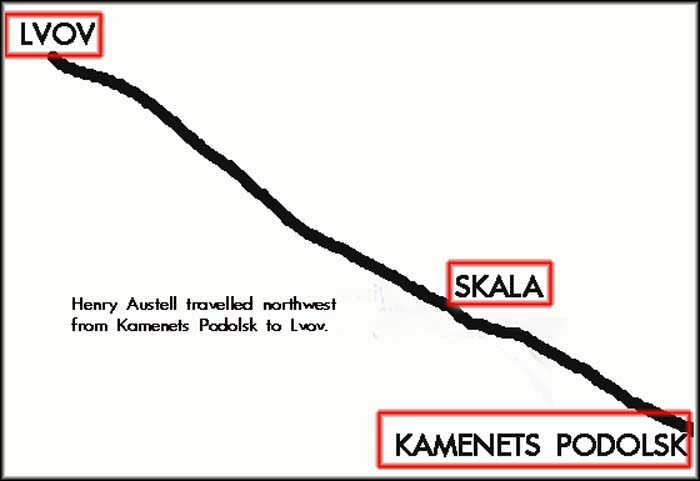An English Visitor to Skala in 1585
Click on map to enlarge
Richard Haklyut (1552-1616) was an English cleric, scholar, and geographer who wrote books on travel and exploration by English adventurers. His seminal work, Principal Navigations, Voyages, and Discoveries of the English Nation, was published in 1589 and again, in an expanded three-volume version, in 1598-1600 under the title Principal Navigations, Voiages, Traffiques and Discoveries of the English Nation. In these books, Haklyut collected, edited, and recorded narrations of the journeys of Elizabethan adventurers overseas. His writings are credited with promoting settlement of North America by the British and he has been called “the spiritual father” of the Jamestown colony. [See Henry Porter, “America's Debt to a Forgotten Hero” The Observer: April 8, 2007 at https://www.theguardian.com/commentisfree/2007/apr/08/comment.usa]
 | Among the explorers immortalized by Haklyut was a man named Henry Austell, to whom Richard Haklyut accorded the title “Master” or ship's captain. Little more is known about Austell, other than that — as noted in an index of Haklyut's book — his voyage of exploration of Podolia, Moldova, and environs took place in 1585. |
The Skala yizkor book cites a 1570 census, according to which there were 232 houses in Skala, 10 of which were inhabited by Jews. [Lachman, Gedalia, “The History of Skala,” Sefer Skala, page 3.] Fifteen years later, when the English adventurer Henry Austell arrived in Skala on October 21, 1585, it is likely that the demography of the town was much the same. Of great interest is that in the sixteenth century, Skala already was known as “a market town.”
For the complete text of Austell's travels as recorded by Richard Haklyut, see: http://etext.library.adelaide.edu.au/h/hakluyt/voyages/v05/chapter71.html
An Excerpt from Richard Hakluyt's
Principal Navigations, Voiages, Traffiques
and Discoveries of the English Nation
The voyage of Master Henry Austell by Venice and thence
to Ragusa ouer land, and so to Constantinople:
and from thence by Moldauia, Polonia, Silesia
and Germanie to Hamburg, &c.
The 20. we passed the riuer of Nyester [Dneister] and came to Camyenetz (fn 367) [Kamenetz-Podolsk] in the countrey of Podolia, subiect to the king of Poland: this is one of the strongest Townes by nature and situation that can be seene.
The 21. we came to Skala. [fn 368]
The 22. to Slothone, or Scloczow. [fn 369]
The 24. to Leopolis [fn 370] which is in Russia alba, and so is the most part of the countrey betwixt Camyenetz and it. And it is a towne very well built, well gouerned, full of trafique and plentifull: and there we stayed fiue dayes.
FOOTNOTES IN THE TEXT:
367 On the river Smokriz.
368 A market town on the Podhoree, S. Of Zeryz.
369 Czorkorw, on the Sered.
370 Lemberg, also called Leopol.
Text (other than Haklyut excerpt), page design, and map copyrighted by Helene Kenvin
We are grateful to Anatolie Didyk for bringing Haklyut's work to our attention.
This page created by Max Heffler
Updated Oct 16, 2017. © Copyright 2005 Skala Research Group. All Rights Reserved.
